Micronesia Future Leaders Invitation Program
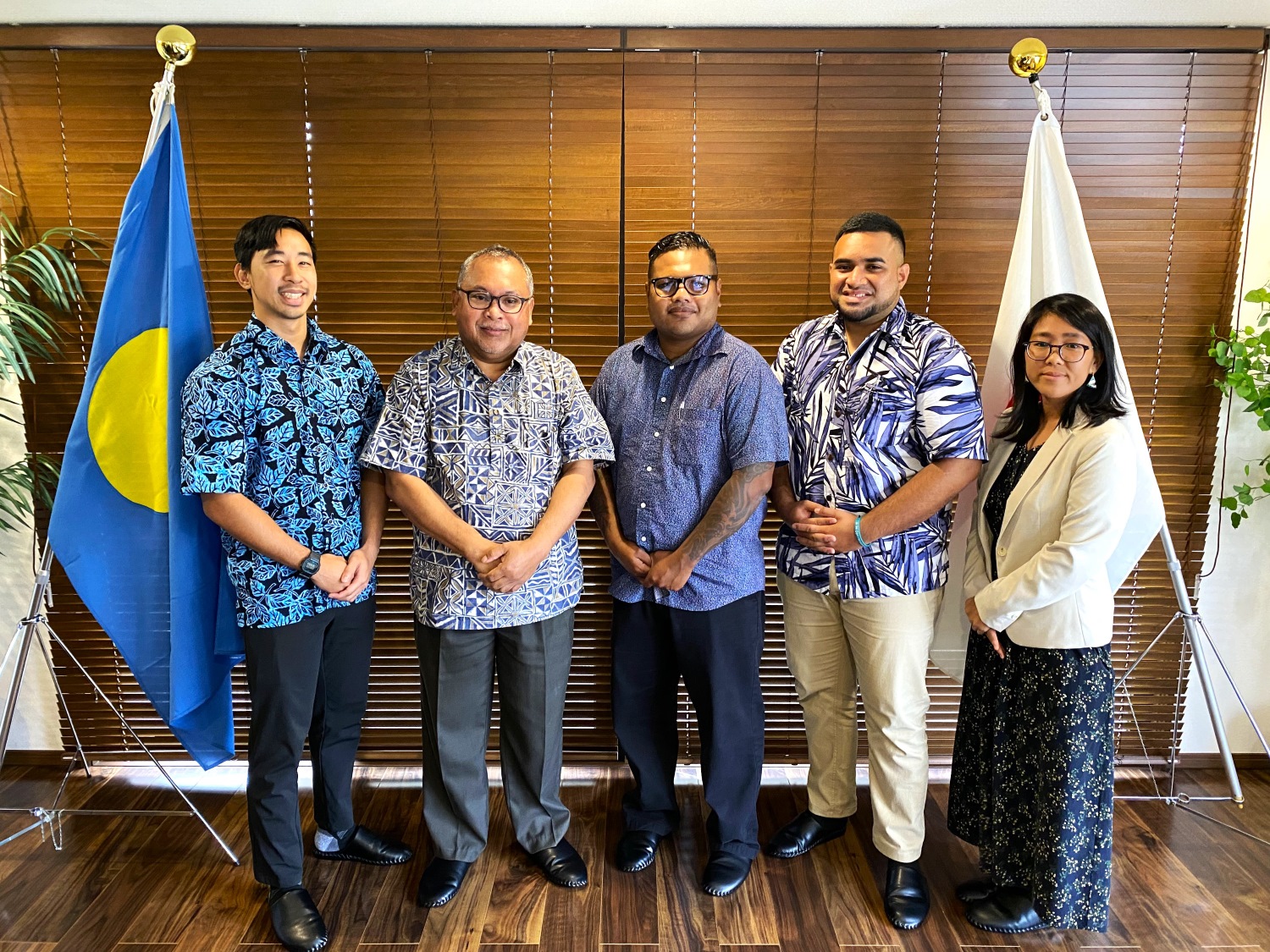
(Group photo with Ambassador Adelbai of Palau (second from left) at Republic of Palau Embassy in Tokyo)
Restart of Program After COVID
This program was originally planned to take place in 2020, but was postponed due to the COVID-19 pandemic, finally taking place three years later.
The program’s goal is to help contribute to the development of participants’ home countries by learning about Japan’s initiatives first-hand through visits, talks, and briefings held in Tokyo and other regional cities in Japan related to each participant’s area of expertise. This time, all participants had different focuses; Mr. Oue’s focus was energy and infrastructure maintenance; Mr. Zebedy’s was marine protection; and Mr. August’s focus was on human resource development. The program incorporated visits to organizations and ministries related to each participant’s area of focus. In Tokyo and Hiroshima, the group took part in disaster protection training in addition to sightseeing, allowing the participants another opportunity to further deepen their studies of Japanese society and Japan’s efforts in various fields.
Visits in Tokyo
On the morning of July 31st the group gathered at APIC’s office for the program orientation. The three participants commented that they were looking forward to learning from Japan’s various efforts and apply them to their home countries. Afterward, the group met with APIC’s Xavier and MCT scholarship students. The participants were aware of APIC’s scholarship program before arriving, and proactively asked the students questions about their majors and research. Recent graduates Natasha and Shaniah were students at Xavier High School (Federated States of Micronesia) at the same time as Mr. Oue, and their majors happened to be related to Mr. Oue’s job; they promised to keep in touch after returning to Micronesia. This is just one example of many fruitful interactions during the program.
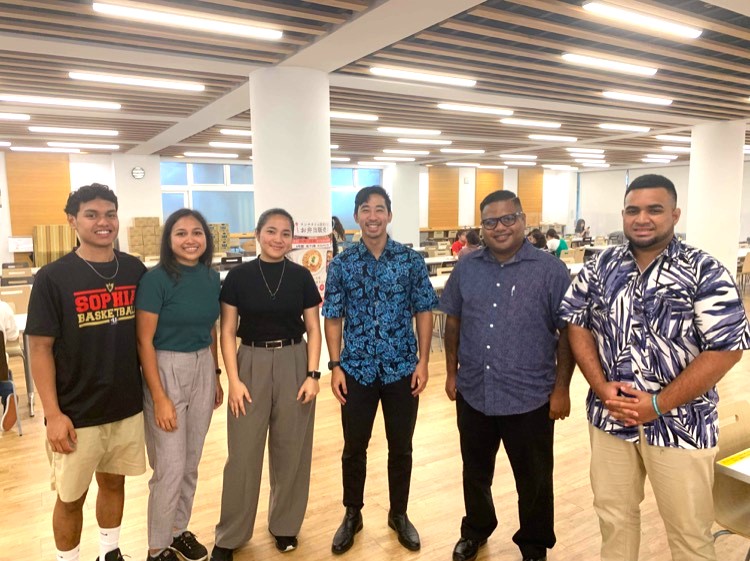
(Visits with Xavier and MCT scholarship students)
On the morning of the 1st, the group visited the offices of Nippon Koei, where they received an explanation of the company’s overseas infrastructure projects. In the afternoon they visited the Tokyo Rinkai Disaster Prevention Park and the Tokyo Sky Tree. The participants said that the visit was a good opportunity to learn about how to act during a time of disaster.
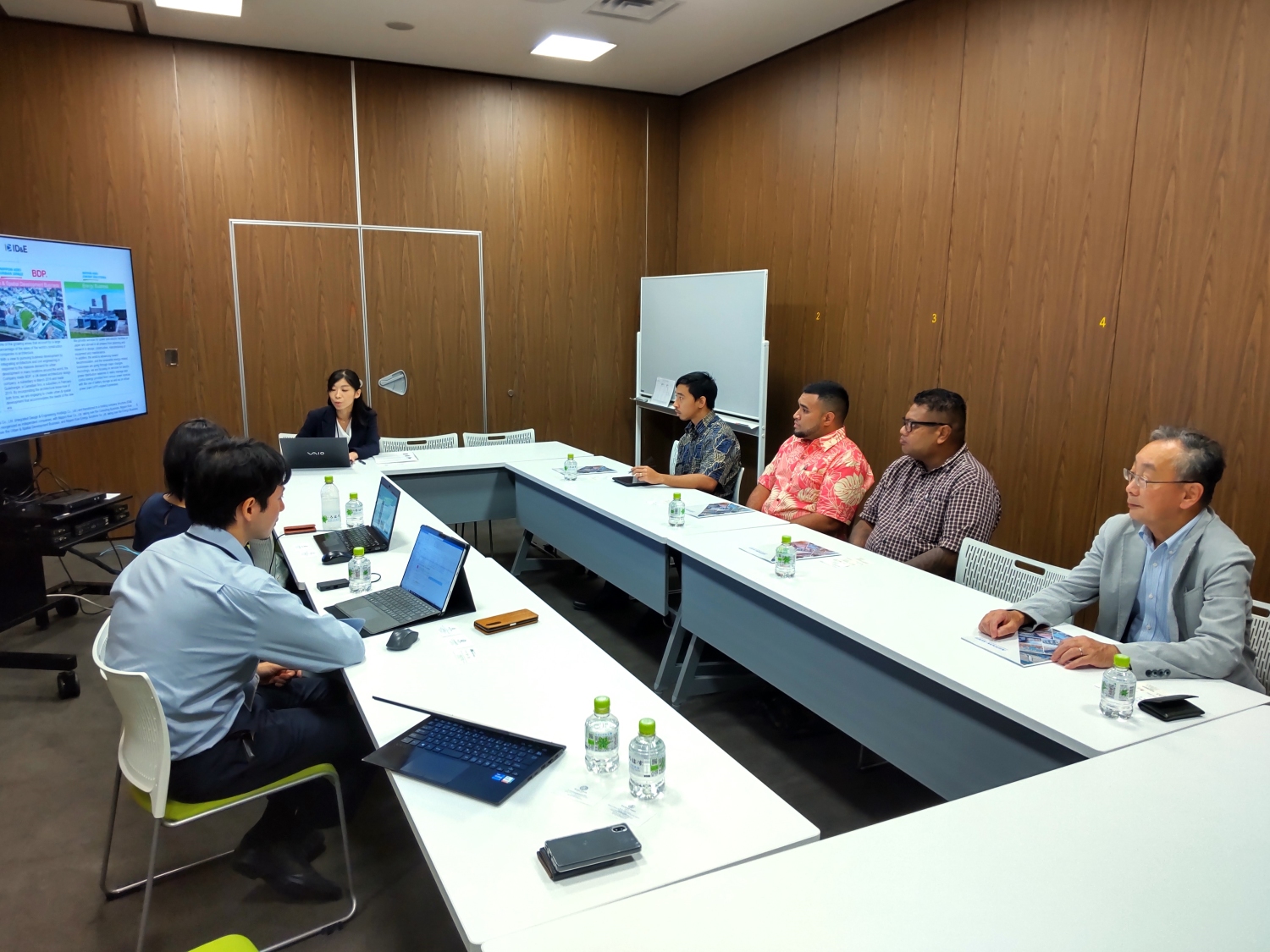
(Visiting the offices of Nippon Koei)
On the 2nd, the participants visited the NBK Corporation, where they received an explanation regarding what types of daily products, including automobiles, the company handles. Recently, NBK has started exporting frozen Wagyu beef to the Marshall Islands, which elicited exclamations of joy from the three participants. In addition, the company also gave an explanation regarding its energy-related projects. The lack of energy supply is a serious problem in the Micronesia region, where regular blackouts effect resident’s daily lives. The participants’ interest in the company’s dealings was high, and they were full of questions. Afterward was a briefing at JICA given by Mr. Tamio, the Chief of the Pacific and Southeast Asia Division, where he outlined JICA’s projects in the region, including scale and other factors. He also talked about international students in Japan who were studying on JICA’s scholarship program.
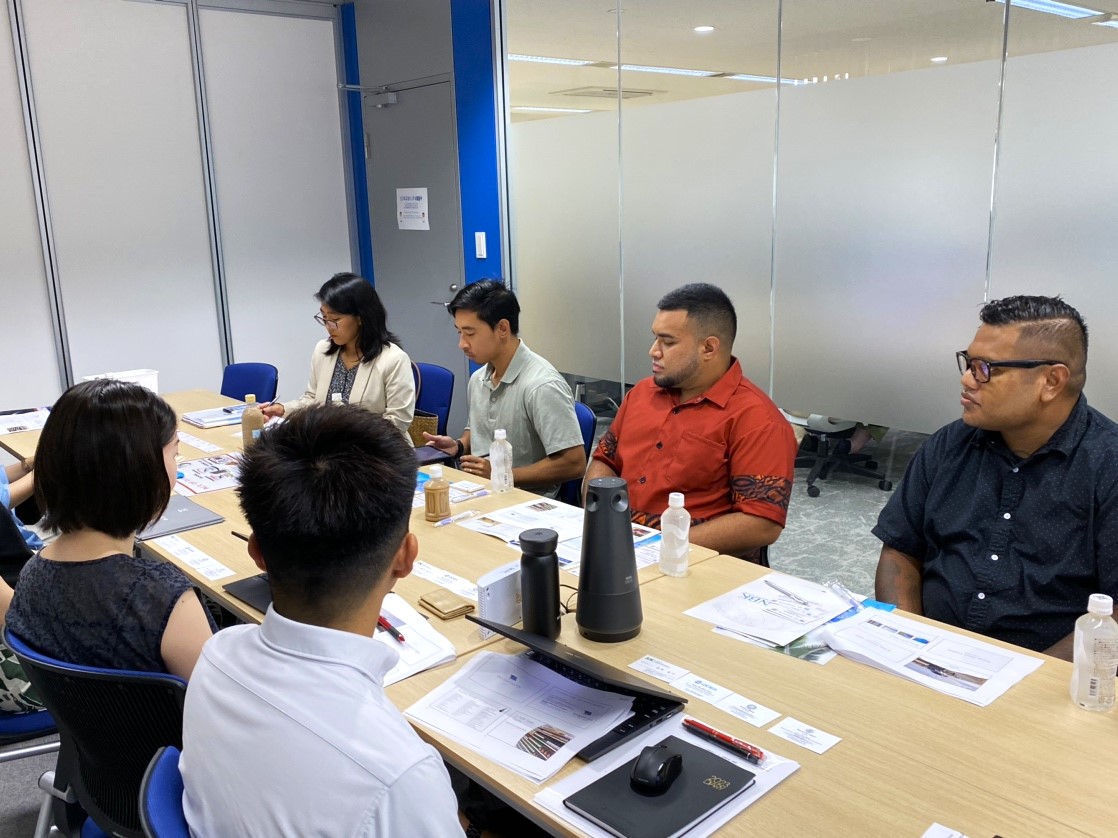
(Visiting NBK Corporation's Headquarters)
A visit to the Tokyo International Recruitment Navi Center was scheduled for the 4th, where the participants listened to explanations regarding the center’s services in matching foreign job seekers with Japanese enterprises. The center gives companies advice on how to help foreign workers adjust to their new workplace by being considerate of religion and culture. On the other hand, the center does not provide active job matching for foreign job seekers, but does offer advice for those who are having difficulty with the traditional Japanese job-hunting process.
Regional Visits
On the 5th the group left Tokyo for Hiroshima, where they paid a visit to the Hiroshima Peace Memorial Museum, A-bomb dome, and Hiroshima castle. They stayed at a traditional Japanese ryokan hotel in Miyajima, thoroughly enjoying their stay. The participants were surprised that parts of the dome were still standing despite being directly hit by the bomb. During the visit to the museum, the topic of nuclear testing in the Bikini Atoll in the Marshall Islands came up, sparking conversation between the participants. The following day was filled with a visit to Miyajima, home to the famous Itsukushima Shrine. The same day the group left Hiroshima for neighboring Okayama prefecture, where they planned to visit the town of Hinase.
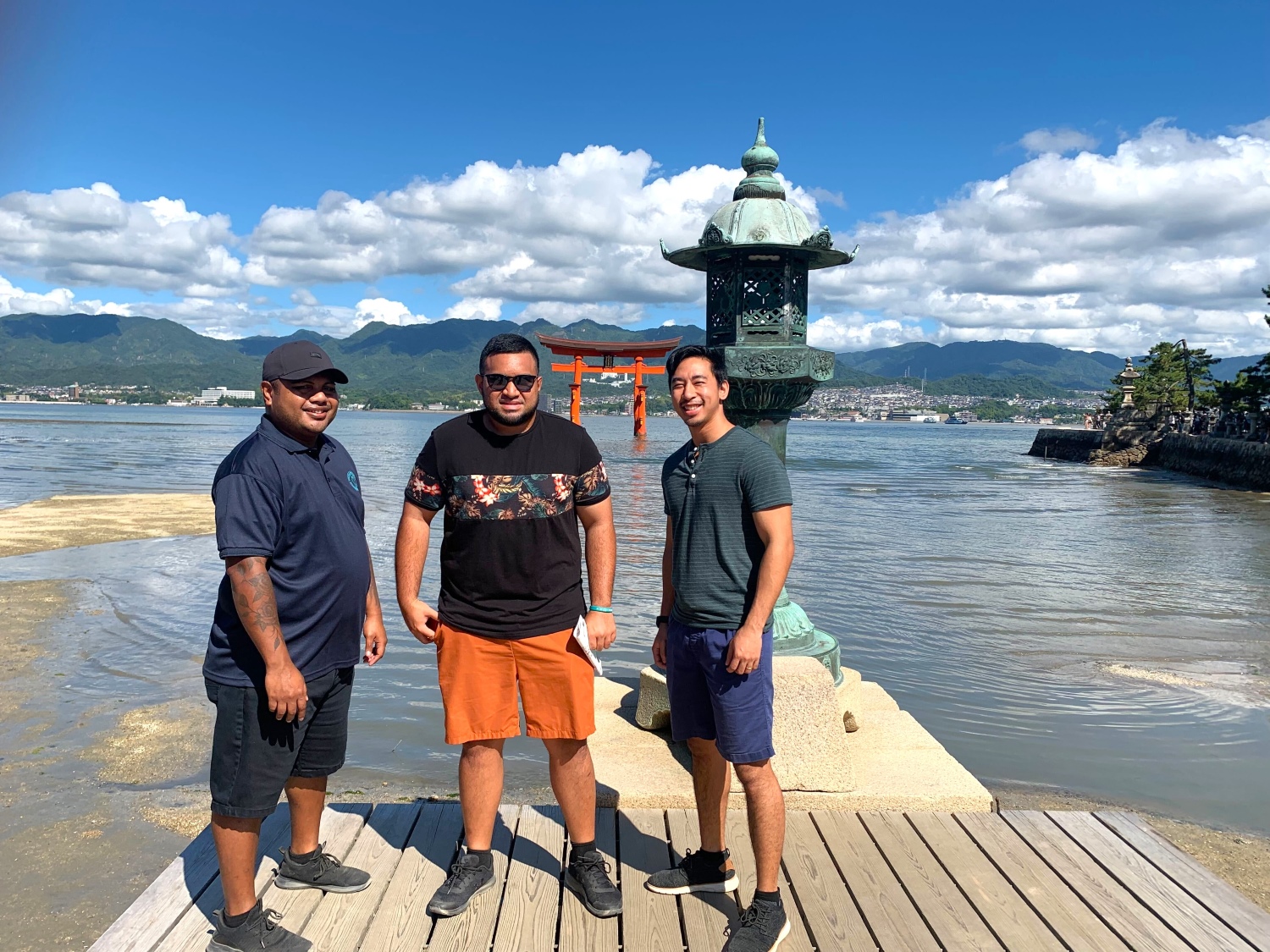
(Sightseeing in Miyajima, Hiroshima)
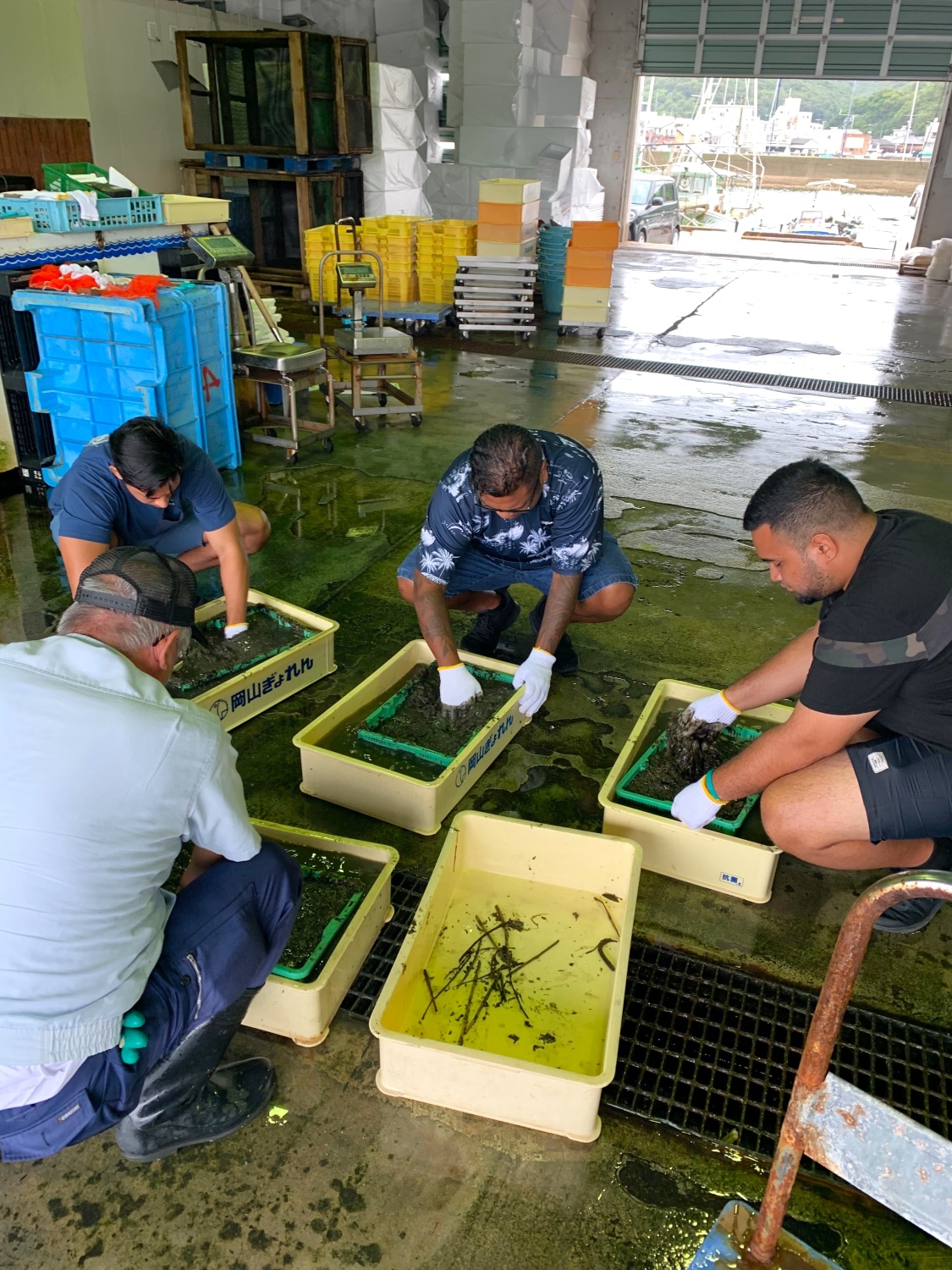
(Separating amamo eelgrass seeds)
WHAT'S NEW
- 2025.12.25 UPDATE
PROJECTS
"Barbados A Walk Through History Part 17"
- 2025.12.2 UPDATE
EVENTS
"Pacific & Caribbean Student Invitation Program 2025"
- 2025.10.30 UPDATE
EVENTS
"Support for the 2025 Japanese Speech Contest in Jamaica"
- 2025.10.30 UPDATE
EVENTS
"Invitation Program for the Director of Bilateral Relations of the Ministry of Foreign Affairs and Trade of Jamaica"
- 2025.10.16 UPDATE
EVENTS
"421st Lecture Meeting Regarding Global Issues"
- 2025.9.18 UPDATE
EVENTS
"420th Lecture Meeting Regarding Global Issues"
- 2025.8.28 UPDATE
PROJECTS
"Barbados A Walk Through History Part 16"
- 2025.7.17 UPDATE
EVENTS
"419th Lecture Meeting Regarding Global Issues"
- 2025.6.19 UPDATE
EVENTS
"418th Lecture Meeting Regarding Global Issues"
- 2025.5.15 UPDATE
EVENTS
"417th Lecture Meeting Regarding Global Issues"




